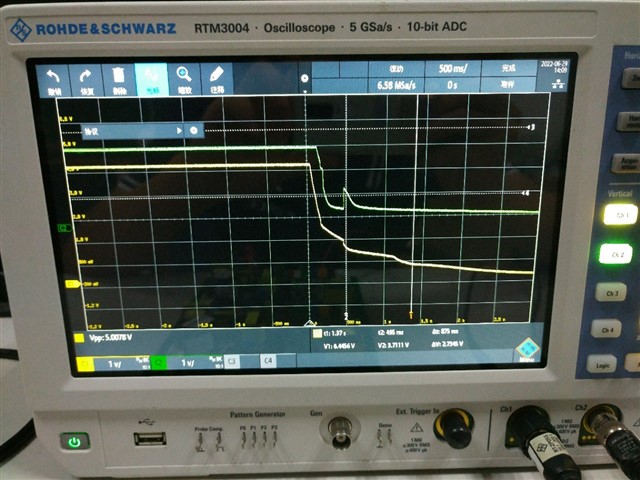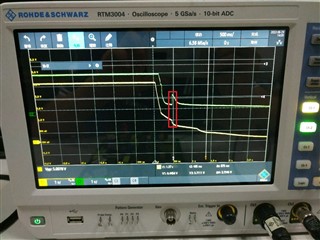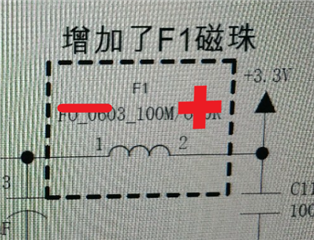Hi,
My customer is facing a problem when using TPS76633, when turned off there is a reverse on output voltage and we can not explain why it occurs. The schematic and the waveform of Vout are showed as below, upper green line is Vout at C114 and lower yellow line is Vin, which is 5V in normal operation.
Customer also try to connect a 5V external DC source to the Input for testing, and this scenario still occurs during turn off. Also, when no load there is no voltage reverse at all.
Could you help to explain or provide possible reasons for this?
Also, I have noticed that in datasheet said that ESR of Cout for TPS766 must higher than 300mohm, could you also kindly explain why the ESR should not be too small? Thanks!


Manu Chang



